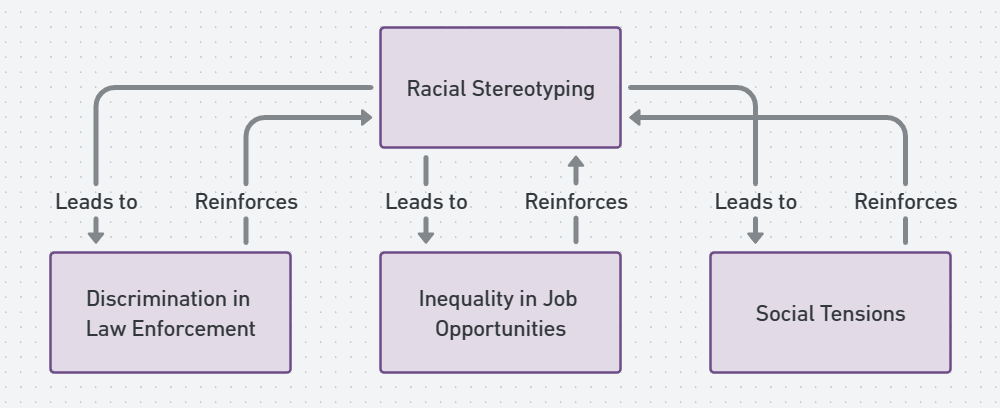Introduction
This reflective essay thoroughly inspects basic sociological concepts covered in “Introduction to Sociology” to show how social structures affect the behavior of individuals independently and collectively. Through the conceptual analysis of specific chapters centering on social stratification, race and ethnicity, state influence, and the effect of globalization, the essay aims to uncover the theoretical foundations and applications of these factors in society (Conerly, 2021). The main objective is to explain the concepts thoroughly and express their significance in theoretical and practical realities, particularly in community development and educational equality. An example-based approach will deepen understanding of sociological theories and demonstrate how theories can change and how people think about socio-structural issues.
Section 1: Detailed Concept Analysis and Examples
Social Stratification (Chapter 9)
Social stratification implies dividing a society into groups and placing them into a hierarchy. In the US, this stratification is seen through class structures—upper or middle class with unequal wealth distribution, power, and prestige (Conerly, 2021). A specific example of social strata manifests itself in the unequal distribution of educational resources to different classes. Upper-class children often enjoy better education facilities, elite schools, and a wide range of networking opportunities, unlike lower-class students who may study in underfunded public schools with fewer learning and extracurricular resources (Lee et al., 2022). It is not only the fact that the social class divide is being reinforced, but social mobility is also becoming more of a long-term problem. For example, tax policy that favors the wealthy increases the wealth gap, and social norms that value a particular type of education or professional career path contribute to specific class advantages (Scheuer & Slemrod, 2021).
Meritocracy (Chapter 9)
Meritocracy is an ideal whose social inequality is caused by individual merit. They can be merits, such as intelligence, qualifications, education, commitments, and skills, or attributed factors, such as age, race, gender, or inherited status, not social. The idea of meritocracy is frequently found in the stories about the “American Dream,” where one believes that hard work and talent outcomes are independent of the individual’s background (Markovits, 2019). Nevertheless, this is an ideal concept, but it does not usually consider systemic barriers that the majority of the groups may face. In practice, although meritocracy is praised for its fairness, it can secretly hide class, race, and gender biases. Take the case of people from rich backgrounds; they have superior avenues to excellent schools and professional networks, factors that are mistakenly labeled solely to talent without any influence from societal factors.
Racial Stereotyping (Chapter 11)
Racial stereotyping is the process of attributing personality, behavior, or ability to people based on their race only. Such outcomes may cause social discrimination, legal injustices, and economic inequality of various racial groups. Racial profiling by law enforcement is a compelling manifestation of racial stereotyping. People of African-American descent, for instance, are often stopped, searched, and arrested and are a product of the myth of black people being more likely to commit crimes. Racial discrimination affects the individual in their relationship with power systems and also penetrates the whole life, which influences employment, housing, healthcare, and education. The Trayvon Martin case epitomizes the sad fact that stereotypes that affect our actions and those who judge our society can be very dangerous and lead to death (Eaton et al., 2020).
Figure 1: Effects of Racial Stereotyping
Government Surveillance (Chapter 7)
Government surveillance is usually justified for maintaining national security, preventing crimes, and regulating information flow. Another pivotal example of government surveillance is the Patriot Act passed by the US government, allegedly in the aftermath of September 11, 2001, to fight terrorism (Hamm, 2016). This law permits extensive wiretapping and tracking of individuals without much stricter oversight, more often violating the privacy and freedom of the people. On the other hand, it was designed to protect national interests but can be an invasion of privacy. It. It has also been criticized for focusing on specific racial or ethnic groups, which may exaggerate social divisions.
Globalization (Chapter 18)
Globalization is the exchange process between people, companies, and governments in all corners of the planet. It is a process that is an agent of change in the environment, culture, political systems, economic development, prosperity, and human physical well-being all over the globe. The worldwide spread of McDonald’s and Starbucks chains is a sign of globalization (DuBois, 2021). In addition, large corporations adjust their business models to fit local markets, create a cultural paradigm shift, shape local economies, and promote the global consumer culture. It is a problematic term that may cause economic growth and lead to such problems as the loss of cultural identity, economic disparities, and environmental degradation. The demonstration of multinational companies’ actions towards labor markets in developing countries shows that globalization has a two-sided nature.
Section 2: Detailed Analysis of Personal Insights and Surprising Discoveries
Surprising Insights
Initially, I had a somewhat simplified view of societal dynamics shaped chiefly by my own life experiences and representations of society in the media. I had no idea about the inner sociological forces that drove behaviors and determined the results of society. A discovery that was one of the most startling ones from the course was the depth and width of systemic inequalities, especially those related to racial and gender discrepancies. The realization that these inequalities have the structural infrastructure, for example, the historical context of racial segregation in housing or the gender wage gap that the advancements in women’s rights could not tackle, helped me understand the problem better.
It was truly eye-opening to learn about redlining practices and their long-term effects on African American communities. These were not just historical injustices but ongoing racial and economic segregation that were continuing to the present day. The understanding that most societal problems are rooted in the system rather than individual failure when my views changed (Conerly, 2021). This knowledge has made clear that sociological concepts have helped formulate policies and interventions that target the source of these disadvantages instead of their outward symptoms.
Challenged Assumptions and Sociological Growth
Challenging Assumptions
Initially, I considered people primarily responsible for their success and failure due to the common saying that hard work and resilience will ultimately lead to success. This perspective faced severe backlash in the course material, which showed a more sophisticated view of how social structures affect individual choices and outcomes. The discussion about meritocracy and practical application identified how social structures obscure or magnify disparities despite the appearance of fairness. The idea that each person should have an equal chance to succeed, regardless of where they begin, and institutional inequalities and disparities in resources refute this notion. Looking at my educational path, I found myself in an advantaged position, with access to advanced placement courses and activities such as sports, which were not offered to all communities, especially those of lower socioeconomic status.
Sociological Growth
The course has dramatically changed the way I view social problems. It made me consider how institutions contribute to the propagation and neutralization of inequality and taught me to look beyond the surface of issues like crime, education, and public health. Contrary to my original views, I have adopted a more structural standpoint, being less individualistic. This change is evidenced in how I view public policies today, where I highlight the importance of system change rather than individual effort. Through participating in various sociological theories and consequently using these theories in real-life issues, my analytical and empathy skills have developed and heightened to a higher level. This has nurtured a more open and curious mindset in my engagements and future career plans.
Section 3: Application and Social Action
Applying a sociological approach in life and career
Personal and Professional Application
The training substantially changed the course of my professional destiny in social work. The sociological elements of problems like poverty, discrimination, and systemic injustice will guide me in dealing with clients, program development, and advocacy. By merging sociological theories into my practice, I plan to design more effective interventions that deal with the root reasons for problems instead of only their manifestations. In working with marginalized groups such as people experiencing homelessness or at-risk adolescents, I intend to use a holistic strategy that addresses the different social, economic, and psychological factors that are involved. In contrast, being aware that social inequalities have effects might help to develop educational projects that are targeting the breaking of poverty cycles. Moreover, this course will teach me how to communicate effectively with policymakers and community leaders. Equipped with a deeper understanding of how public policy may worsen or improve inequalities, I hope to speak on behalf of the community and recommend corrective measures that center on equity and equality for all members.
Personal Life Implications
This course presented me with social concepts which I believe will influence the way I relate to people and my view of societal norms and behaviors. By looking at cultural and structural factors that influence personal decisions, I may learn to be compassionate and informed in my relationships with those around me. Learning about racial and gender stereotyping will let me correct the prejudiced thinking of my peers and would thus contribute to them developing a more inclusive attitude and behavior. This is even more so in today’s multi-cultural society that relies on empathy and understanding for social unity.
Proposed Social Action Program: Strengthening Community Through Educational Equity
Program Overview
This program aims to provide equal educational opportunities to all children in the community, regardless of their socioeconomic status. The program we are aimed at will be profoundly interested in children and teenagers from low-income families, as well as those at risk of falling behind their peers because of the lack of resources and support.
Detailed Action Plan
The structured plan outlines actions and aims for each program phase, as shown in Table 1. This framing will provide an umbrella under which all efforts will strive to make community education more fair.
Table 1: Action Plan for Implementing a Community-Based Educational Equity Program
| Step | Action | Description | Responsible Parties | Timeline |
| 1 | Community Assessment | Conduct surveys and interviews with stakeholders to identify educational needs and resource gaps. Collaborate with local schools and parent groups. | Program coordinators, local school officials, community leaders | 1-2 months |
| 2 | Resource Mobilization | Secure funding and resources through grants, partnerships with local businesses, and community donations. Partner with educational nonprofits for support. | Grant writers, program director, community partners | 2-3 months |
| 3 | Program Development | Develop workshops, tutoring, and summer programs to enhance academic and social skills. | Educational specialists, curriculum developers | 3-4 months |
| 4 | Volunteer Recruitment and Training | Recruit and train volunteers in sociological principles and teaching techniques. | Volunteer coordinator, training staff | 1 month |
| 5 | Implementation and Monitoring | Launch the program and monitor its impact. Collect feedback and adjust as necessary. | Program staff, evaluators | Ongoing |
| 6 | Community Awareness and Engagement | Raise awareness and celebrate achievements through community events. | PR team, event organizers | Ongoing |
The Gantt chart, therefore, plays a pivotal role in the community-based educational equity program, which is a dynamic representation of the timeline of all activities and sub-tasks (Ramachandran & Karthick, 2019). It enhances transparency, leading to participation, engagement, and accountability since all those concerned can access information in clear timeframes, roles, and actions taken.
Table 2: Gantt Chart Development for Educational Equity Program Action Plan
| Tasks/Subtasks | Responsible Parties | Start Date | End Date | Duration |
| Community Assessment | ||||
| Design Survey | Program Coordinators | Jan 1 | Jan 7 | 1 week |
| Distribute Surveys | Community Leaders | Jan 8 | Jan 21 | 2 weeks |
| Analyze Responses | Data Analysts | Jan 22 | Jan 28 | 1 week |
| Report Findings | Program Coordinators | Jan 29 | Feb 4 | 1 week |
| Resource Mobilization | ||||
| Identify Potential Partners | Program Director | Feb 5 | Feb 11 | 1 week |
| Draft and Submit Grant Proposals | Grant Writers | Feb 12 | Feb 26 | 2 weeks |
| Secure Community Donations | Community Outreach Team | Feb 27 | Mar 5 | 1 week |
| Program Development | ||||
| Curriculum Design | Educational Specialists | Mar 6 | Mar 26 | 3 weeks |
| Materials Preparation | Curriculum Developers | Mar 27 | Apr 2 | 1 week |
| Volunteer Recruitment and Training | ||||
| Recruitment Campaign | Volunteer Coordinator | Apr 3 | Apr 16 | 2 weeks |
| Conduct Training Sessions | Training Staff | Apr 17 | Apr 23 | 1 week |
| Implementation and Training | ||||
| Program Launch | Program Staff | Apr 24 | Apr 24 | 1 day |
| Monthly Monitoring Sessions | Evaluators | Apr 25 | Ongoing | Monthly |
| Community Awareness and Engagement | ||||
| Plan and Organize Launch Event | Event Organizers | Apr 25 | May 8 | 2 weeks |
| Ongoing Community Workshops | PR Team | May 9 | Ongoing | Monthly |
Conclusion
The process of investigating sociological concepts has dramatically improved my understanding of the diversity of social structures and their impact on people and communities. By working on and discussing the critical aspects of sociology, I have realized the structural basis of social inequality and written a plan to reduce the educational gap in our community. The program, organized by a detailed Gantt chart, highlights the direction of community-oriented initiatives promoting educational equity. This essay demonstrates the necessity of using sociological information to create real change by explaining how education is instrumental in promoting social justice and equality. While taking the social issues one after another, I will apply these tools and theories to provide better guidance towards community development and engagement.
References
Conerly, T. R. (2021). Introduction to sociology 3e. OpenStax.
DuBois, T. D. (2021). Fast Food for Thought: Finding Global History in a Beijing McDonald’s. World History Connected, 18(2).
Eaton, A. A., Saunders, J. F., Jacobson, R. K., & West, K. (2020). How gender and race stereotypes impact the advancement of scholars in STEM: Professors’ biased evaluations of physics and biology post-doctoral candidates. Sex roles, 82, 127-141.
Hamm, M. S. (2016). The USA Patriot Act and the politics of fear. In Cultural criminology unleashed (pp. 301-314). Routledge-Cavendish.
Lee, H., Shores, K., & Williams, E. (2022). The distribution of school resources in the United States: A comparative analysis across levels of governance, student subgroups, and educational resources. Peabody Journal of Education, 97(4), 395-411.
Markovits, D. (2019). The meritocracy trap. Penguin UK.
Ramachandran, K. K., & Karthick, K. K. (2019). Gantt chart: An important tool of management. Int. J. Innov. Technol. Explor. Eng, 8(7).
Scheuer, F., & Slemrod, J. (2021). Taxing our wealth. Journal of Economic Perspectives, 35(1), 207-230.
Cite This Work
To export a reference to this article please select a referencing stye below:








